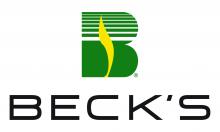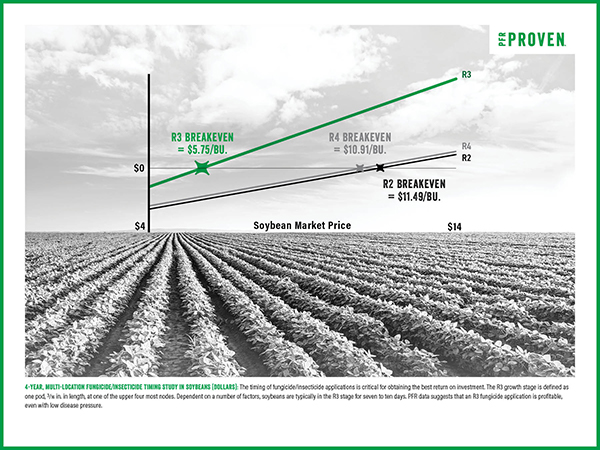ILSOYADVISOR POST
Foliar Nutrition: Targeted or Blanket Applications?

Applying foliar nutrition products in-season to ensure your crop has the nutrition it needs to finish strong is nothing new! In fact, the Beck’s Practical Farm Research (PFR)® program has identified five PFR Proven™ foliar nutrition products for use in soybeans. If you are unfamiliar with the PFR Proven concept, it is any product or practice that has been tested in PFR and found to provide yield gains and average a positive return on investment (ROI) over a minimum of 3 years. While it may seem like an obvious choice to use these products on your farm, it may be more beneficial to take a targeted approach to foliar nutrition.
Incorporating a tissue sampling plan into your farm’s fertility program, in conjunction with soil testing, can further increase the effectiveness of plant nutrition. While a targeted tissue sampling plan may not be something that can be efficiently established on every farm or field, a planned sampling scheme of fields can likely pay dividends. This is especially true if nutrient deficiencies are occurring in the field. It’s worth noting that micronutrient results from a soil sample can be used as a starting point; however, the micronutrient information from a tissue sample is likely more accurate.
As tissue sampling has become more prevalent, there have been many thoughts as to when you should pull samples. Often, we pull a tissue sample or two if we notice something wrong in a field. This is a reactive approach, and the most common reason we tissue sample. If we see a deficiency or an off-colored area of a field, we try to identify the issue. However, if you can see the problem, it is likely that the yield is already impacted.
What about taking a targeted, preemptive approach to tissue sampling? Instead of waiting for a problem to arise, plan a sampling scheme that works for you, and, more importantly, fits in your budget. Some choose to sample bi-weekly or even weekly in intensively managed systems. I prefer to target specific growth stages. We know that big things happen at specific growth stages in crops like corn; however, in soybeans, a great place to start sampling is somewhere around the V3 to V5 growth stage in an attempt to minimize stress between R1 and R2 or the blooming stage. It’s good to then sample again at R2 to stay ahead of R3, because this is where we will be targeting a fungicide application. Then, pull samples again at R4 so you are prepared to make necessary applications ahead of pod fill.
It is worth noting that in soybeans, about 50% of total micronutrient uptake occurs between R1 and R5. Therefore, why not determine one or two locations within a field, and tissue sample these areas ahead of these critical growth stages? This can help identify nutrient issues and allows time to make corrective applications, if needed, before these critical growth stages where pod set and pod fill can be impacted.
Many PFR Proven products contain multiple nutrients; however, if you don’t know which nutrient is deficient, how do you know which product to apply? If, for example, boron is deficient in a soybean field, are you sure that the product that you intend to apply will correct the issue? It may seem easier to simply add in a foliar product that contains small amounts of many nutrients when making herbicide or fungicide applications because you are already going to be in the field. But, you need to remember that the product may not be able to correct your underlying issues.
As we continue to increase yields, one strategy is to create a plan, identify the need and make applications that provide the best chance for a positive yield response. By being proactive, you can put yourself in a position to increase yield and your overall ROI! For more information on the PFR Proven products that can aid in improving soybean yields, please visit https://www.beckshybrids.com/pfresearch/.

Beck’s PFR is the largest source of unbiased, cutting-edge agronomic information in the industry. This year, Beck’s PFR team is testing more than 100 studies testing 114 products and practices across multiple locations to learn how different management practices and new technologies perform in field environments. By evaluating agronomic practices and input products, not comparing seed products, Beck’s PFR aims to help farmers maximize their input dollars and increase their bottom line. To view more PFR studies click here.
Practical Farm Research (PFR)® and PFR Proven™ are trademarks of Beck’s Superior Hybrids, Inc. PFR Proven™ was developed in 2016 to identify the products and practices that are likely to be most profitable. If a product has been tested in PFR and found to provide yield gains and averages a positive ROI over a minimum of three years, then that product will earn the status of PFR Proven and should be something to consider trying on your farm. If a practice has been tested in PFR and found to be the most profitable, then it will also receive the status of PFR Proven. Please consult with your local Beck’s representative or trusted advisor for best management practices in your area.





Comments
Add new comment